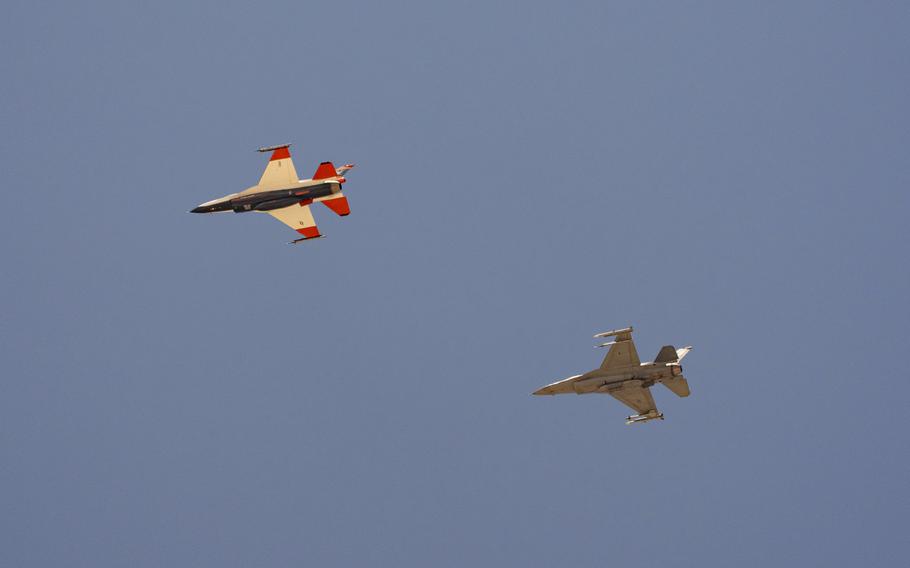
An AI-enabled Air Force F-16 fighter jet, left, flies next to an faux-adversary F-16, as both aircraft race within 1,000 feet of each other, trying to force their opponent into vulnerable positions, on Thursday, May 2, 2024, above Edwards Air Force Base, Calif. (Damian Dovarganes/AP)
In the final months of the Biden administration, the secretary of the Air Force, Frank Kendall, paused the Next Generation Air Dominance Fighter Program (NGAD) and ordered a new analysis to determine the right path for our fighter force. Designed as a “family of systems” with a piloted fighter at the center accompanied by various unmanned craft, NGAD has been intended to be the future of our efforts to dominate any air war in the coming decades. The war in Ukraine has made it clear that the air wars of the future are changing, with a greater role for unmanned and autonomous aircraft in combat.
As a naval aviator for 25 years and a combat veteran, I feel very fortunate to have lived between Orville and Wilbur Wright and the last pilot to fly a plane. The decision on what may be the last American fighter jet program with a pilot in the cockpit is right in front of us.
One of the challenges our leaders in the Pentagon continuously face is how do we reorient the force for the next conflict. We don’t ever want to be preparing for the last war. The People’s Republic of China has developed a strategy of Anti-Access/Area Denial (A2/AD) to impede our operations in the Western Pacific. Their air defense architecture includes longer range air-to-air missile systems and integrated space systems to restrict our operational reach and challenge our conventional fighter force. We can no longer rely on fighting our way into the battlespace.
I don’t agree that conflict with China is inevitable, and we should go to great lengths to avoid it, but if we do find ourselves in a fight with the Chinese, we must have a force design that will win. That force design needs to include a joint warfighting concept that will rely heavily on the capability of the U.S. Air Force, which is a hard thing for me to say as a Navy guy. We will need longer range air-to-air missile systems, better defensive systems for air bases, aerial refueling tankers that can survive in a contested environment and more than anything else, we need a asymmetric capability that will buy down risk.
Penetrating the A2/AD bubble and generating combat sorties up-close is the only way we will win this fight. NGAD could provide the edge we need. Also, just as important for warfighting, it may help stave off the next war by deterring adversaries.
The program is at a decision point. The new administration must choose to move forward with NGAD by this spring. If they don’t make a decision, it risks dragging out the entire process, which will increase the cost of the program dramatically and gives China time and space to develop its own next generation fighter. It will also disrupt the long supply chain necessary to support a program of this size, which includes smaller companies and their employees.
We’ve seen time and again that uncertainty is a plague on our acquisitions process. In the coming weeks I’ll be reviewing Kendall’s analysis and getting briefed by the Pentagon. I encourage the administration to do so as quickly as possible.
Mark Kelly, a Democrat, represents Arizona in the U.S. Senate.